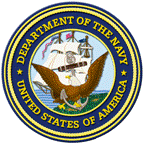United States Department of Defense

United States Navy: Publications
Date of this Version
1-17-2017
Citation
J. Anim. Sci. 2017.95:1396–1406 doi:10.2527/jas2016.1113
Abstract
Ammonium urate nephrolithiasis frequently develops in common bottlenose dolphins (Tursiops truncatus) managed under human care but is rare in free-ranging common bottlenose dolphins. In other species, the dietary cation–anion difference (DCAD) can affect ammonium urate urolith formation by increasing proton excretion as ammonium ions. Therefore, differences in diet between the 2 dolphin populations could affect urolith formation, but the DCAD of most species consumed by free-ranging and managed dolphins is unknown. To compare the nutrient composition of diets consumed by free-ranging and managed bottlenose dolphins, samples (n = 5) of the 8 species of fish commonly consumed by freeranging bottlenose dolphins in Sarasota Bay, FL, and the 7 species of fish and squid commonly fed to managed bottlenose dolphins were analyzed for nutrient content. Metabolizable energy was calculated using Atwater factors; the DCAD was calculated using 4 equations commonly used in people and animals that use different absorption coefficients. The nutrient composition of individual species was used to predict the DCAD of 2 model diets typically fed to managed common bottlenose dolphins and a model diet typically consumed by common bottlenose dolphins in Sarasota Bay. To mimic differences in postmortem handling of fish for the 2 populations of bottlenose dolphins, “free-ranging” samples were immediately frozen at −80°C and minimally thawed before analysis, whereas “managed” samples were frozen for 6 to 9 mo at −18°C and completely thawed. “Freeranging” species contained more Ca and P and less Na and Cl than “managed” fish and squid species. As a consequence, the DCAD of both model managed dolphin diets obtained using 3 of the 4 equations was much more negative than the DCAD of the model free-ranging bottlenose dolphin diet (P < 0.05). The results imply that managed bottlenose dolphins must excrete more protons in urine than free-ranging bottlenose dolphins, which will promote nephrolith formation. The nutrient composition of the free-ranging bottlenose dolphin diet, determined for the first time here, can be used as a guide for feeding managed bottlenose dolphins, but research in vivo is warranted to determine whether adding more cations to the diet will prevent urolith formation in managed dolphins.


Comments
This document is a U.S. government work and is not subject to copyright in the United States.